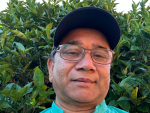With the winter tree-planting season just around the corner, it’s timely to look at the many farming ‘fruits’ they can provide -- besides any real ones.
Those benefits include shelter for stock and support for pasture growth.
Clearly animals suffer in bad weather. Stock farmed in paddocks, in particular, don’t always have access to natural shelter so planting of shelterbelts is a useful way of helping protect them from wind, rain and cold in winter, and heat stress during hot weather.
Besides protecting stock physically, reducing animal stress helps ensure better feed intake and farm production.
Shelterbelts also help reduce evaporation of soil moisture and transpiration from the grass, particularly helpful in protecting grass growth during droughts or prolonged dry spells. Important in this is the reduction of wind-induced agitation of the grass.
Wind can cause physical damage to grasses, leading to stunting or desiccation. The wind speed threshold for physical damage in herbaceous plants in general is often said to be about six metres per second. At higher wind speeds, grass blades knock and rub together, bend over, and frequently rotate about their longitudinal axes. Such movements may produce permanent lateral fractures, desiccation and wilting of the leaf tips.
Shelterbelts also help in erosion control and soil conservation.
And shelter trees can be a haven for birds, provide shelter for homes, buildings and stock yards, be aesthetically pleasing, and increase the diversity of tree species in an area. They can also screen noise and reduce odours from livestock operations.
Native plants used for shelterbelts, particularly those naturally occurring in a locality, help to preserve local character and provide forage for bees.
Strategic planting is likely better than blanket planting and, because of the long-term commitment, careful decisions should be made.
Certain principles need to be born in mind while planning for shelterbelts.
Shelter is most effective when sited at right angles to the prevailing wind. The wind barrier should be sited directly across the prevailing wind to give maximum protection. If east-west shelterbelts are required they should include deciduous species to lessen winter shading of pastures.
The density of a shelter belt determines the wind behaviour on the leeward and to some extent on the windward side. Belts of medium porosity produce a much more even wind flow over a much wider area. Good porosity or permeability of shelterbelts can be achieved by correct species selection and management including pruning and training. When permeability is lower than, say, 50%, the wind profile will be changed and turbulence occurs.
The longer the windbreak, the better the protection: short plantings have a disproportionate edge effect, where wind slips around the ends reducing the area of protection.
Gaps in a shelterbelt cause the wind to funnel through at excessive speed. This can happen where there are missing trees or when there is a draughty space at ground level.
Tall shelter gives the most economic protection as the area protected is directly related to the height of the windbreak.
For further site specific advice, contact Waikato Regional Council on 0800 800 401.
• Bala Tikkisetty is a sustainable agriculture advisor at Waikato Regional Council, available at This email address is being protected from spambots. You need JavaScript enabled to view it.


















